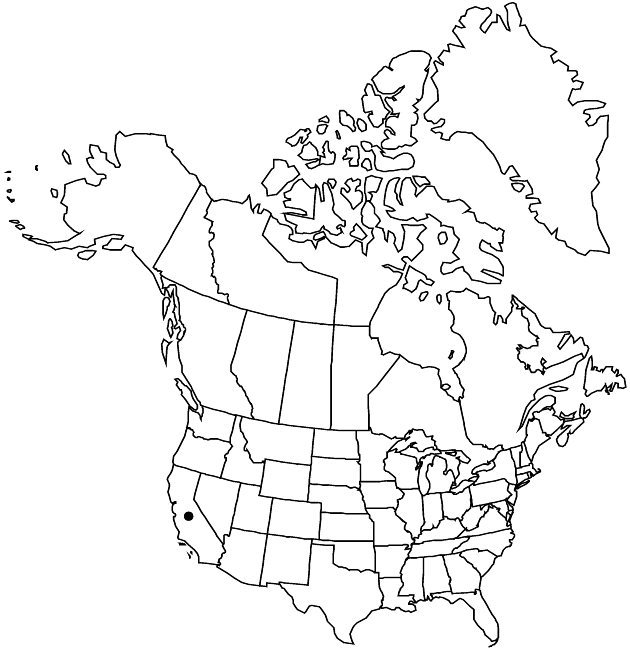Calycadenia oppositifolia
Fl. Francisc. 4: 423. 1897.
Plants 10–30 cm; self-incompatible. Stems simple or sparingly branched (very slender), strigose and sparsely spreading-hairy. Leaves mostly or all opposite, 1–5 cm (little reduced distally), strigillose and ± long-hairy (at least proximally). Heads in congested, axillary glomerules (appearing whorled). Peduncular bracts lanceolate (flat, stiff, sometimes ± cylindric near apices), 4–10 mm (hispidulous, ± bristly and/or pectinate-fimbriate, especially proximally), apices ± rounded, tack-glands (0–) 1–5+. Phyllaries (often reddish) 4–7 mm, abaxial faces sometimes minutely scabrous, often sparsely bristly, tack-glands usually 0, sometimes 1+. Paleae 4–7 mm. Ray-florets 2–4; corollas white to reddish, tubes ca. 2 mm, laminae 6–9 mm (central lobes ± equaling or narrower than laterals, elliptic, nearly symmetric, widest near middles, sinuses equaling laminae). Disc-florets 4–20; corollas white to pink, ca. 6 mm. Ray cypselae ca. 3 mm, usually smooth, glabrous. Disc cypselae ca. 3 mm, ± appressed-hairy; pappi of 8–10 usually lanceolate, acuminate scales ca. 2 mm (often 2–4 shorter, blunt). 2n = 14.
Phenology: Flowering spring–early summer.
Habitat: Open, dry meadows, hillsides
Elevation: 50–900 m
Discussion
Calycadenia oppositifolia is known only from the Sierra Nevada foothills of Butte County. Its closest relative may be C. multiglandulosa.
Selected References
None.
